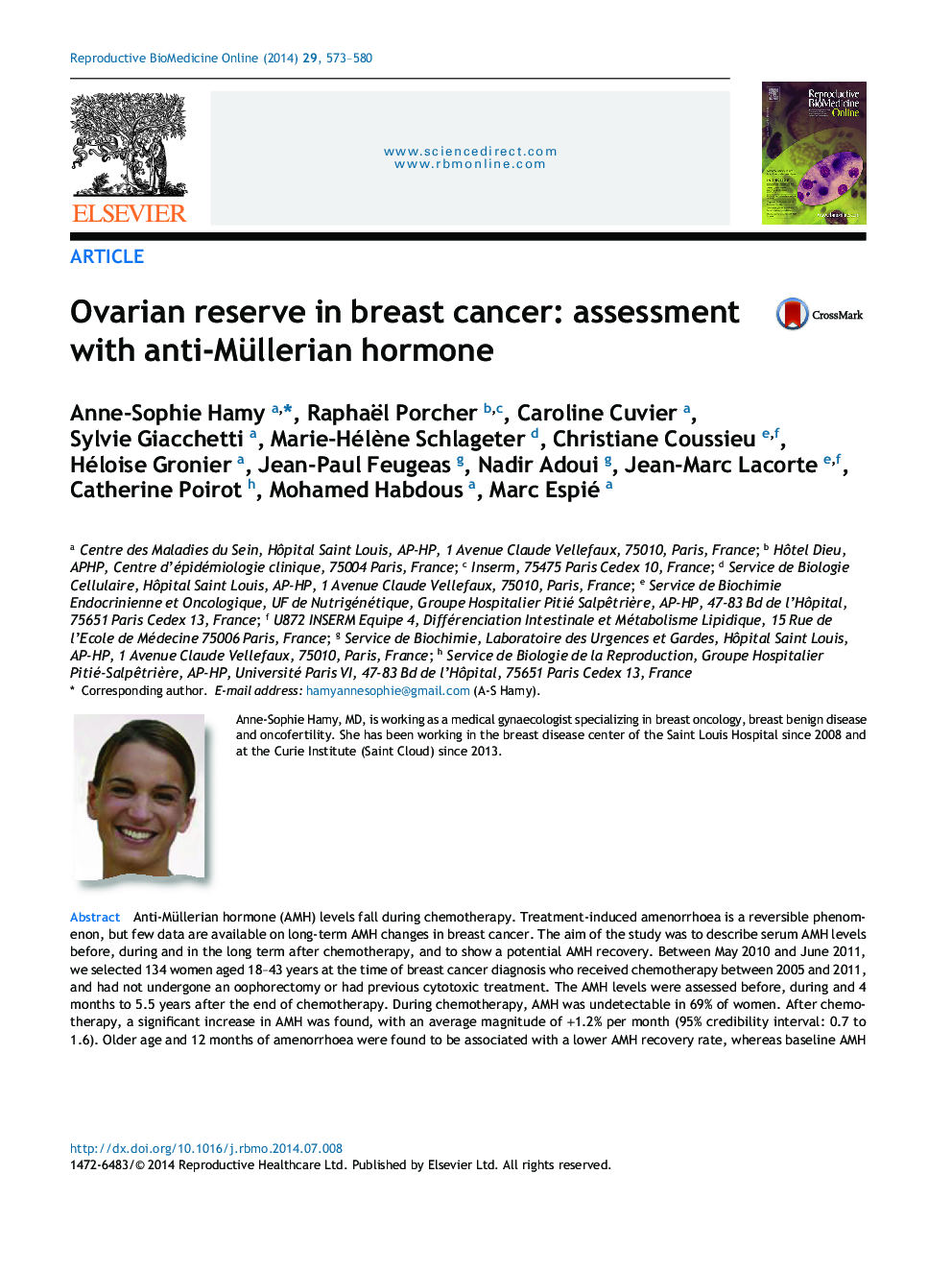| Article ID | Journal | Published Year | Pages | File Type |
|---|---|---|---|---|
| 6188991 | Reproductive BioMedicine Online | 2014 | 8 Pages |
Anti-Müllerian hormone (AMH) levels fall during chemotherapy. Treatment-induced amenorrhoea is a reversible phenomenon, but few data are available on long-term AMH changes in breast cancer. The aim of the study was to describe serum AMH levels before, during and in the long term after chemotherapy, and to show a potential AMH recovery. Between May 2010 and June 2011, we selected 134 women aged 18-43 years at the time of breast cancer diagnosis who received chemotherapy between 2005 and 2011, and had not undergone an oophorectomy or had previous cytotoxic treatment. The AMH levels were assessed before, during and 4 months to 5.5 years after the end of chemotherapy. During chemotherapy, AMH was undetectable in 69% of women. After chemotherapy, a significant increase in AMH was found, with an average magnitude of +1.2% per month (95% credibility interval: 0.7 to 1.6). Older age and 12 months of amenorrhoea were found to be associated with a lower AMH recovery rate, whereas baseline AMH and number of chemotherapy cycles were not. The process of AMH changes during and after chemotherapy is dynamic, and shows recovery after ovarian injury. Caution should be exercised in interpreting individual AMH assessment in this context.
